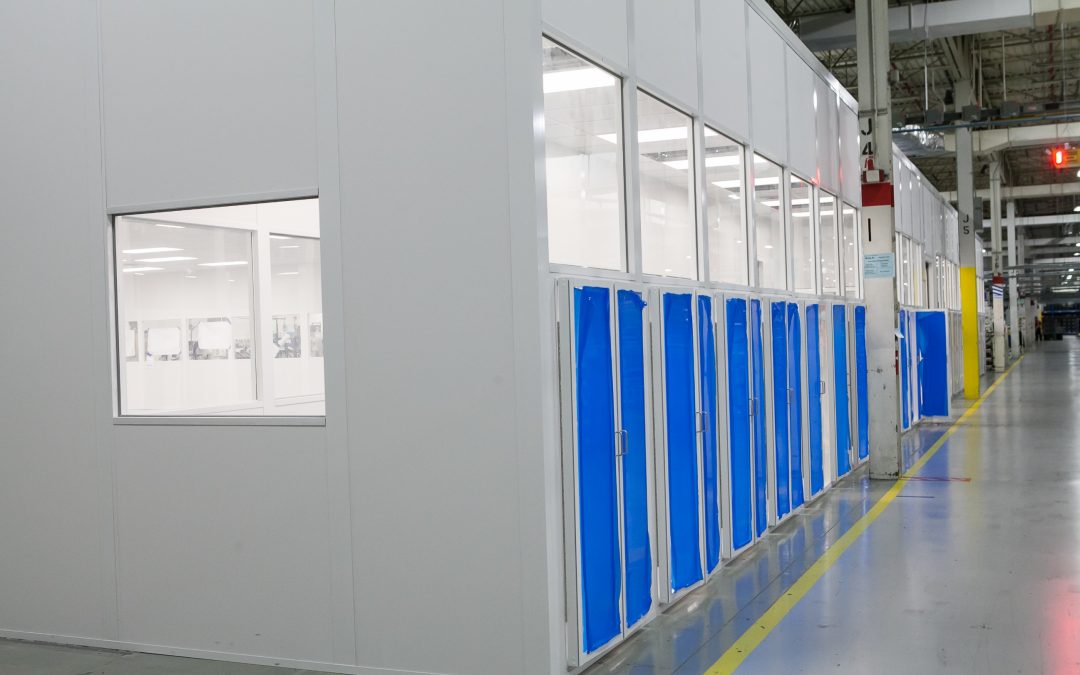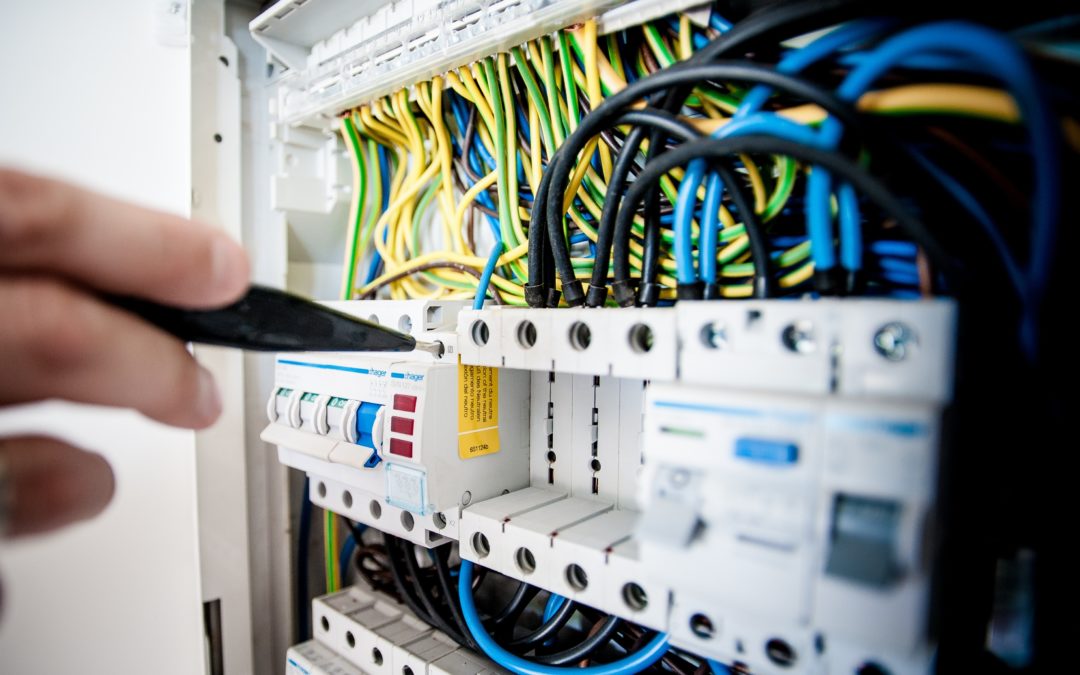
How Often Should I Maintenance My Cleanroom?
Proper cleanroom maintenance is not only important to keep a cleanroom running efficiently and limit dangerous contamination of processes, but it can also save your company money. Improper cleaning or maintenance of your cleanroom could be costly, even dangerous, and could lead to liability issues — especially in sensitive industries like pharmaceutical cleanrooms, manufacturing of fine electronics, or the development of medical devices. Regular and thorough maintenance keeps a cleanroom in good operational shape and establishes a safe space for employees to work.
The ideal maintenance schedule for your cleanroom will depend on its classification and cleanliness standards. A general recommendation for cleanrooms with an ISO Classification from 1-5 is to schedule semi-annual inspections of their equipment and systems, while cleanrooms with ISO Classification from 6-9 can manage with annual checks. Keep in mind, some components of the cleanroom require more consistent maintenance, such as its filters.
Cleanroom Maintenance Areas
Whether your cleanroom follows a strict maintenance schedule on its own or works with an outside contractor, the most important cleanroom maintenance areas include filtration, the HVAC system, and your industry-specific equipment.
Air Filtration System
Most cleanrooms use three sets of filters to collect particles from the air. The outermost filters, or pre-filters, require the most maintenance as they are the first line of defense, protecting the innermost — and most expensive — HEPA filters.
Pre-filters can be assessed by checking differential pressure or air outflow velocity. On average, they will need to be replaced 6 times per year. Bag/box filters function as intermediary filters and are generally replaced annually. HEPA filters should be replaced about every three years, but must be checked periodically to ensure that they are functioning properly. All filters should be assessed regularly to determine their effectiveness.
Be aware that your cleanroom’s location can affect the schedule of filter replacement. For example, if your building is located in an area that experiences more air pollution or possible contaminants, such as next to a freeway, railroad track, or factory, it might require more frequent filter checks. You can use air samplers or settle plates to test the air quality within your cleanroom, and make changes to your cleanroom’s filter replacement schedule as necessary.
Cleanroom Equipment
Your industry-specific cleanroom equipment will likely require regular maintenance to make sure it serves your needs effectively. This may include equipment like fume hoods and boilers, as well as important cleanroom areas like the gowning room and waste-disposal areas.
Cleanroom equipment maintenance will require the cleanroom to be shut down, so it is important to plan ahead to minimize disruption. It’s best to bundle cleanroom maintenance tasks together, such as replacing pre-filters while upgrading or repairing the equipment that your cleanroom contains, as well as the furniture that supports it.
Cleanroom HVAC System
Your cleanroom’s HVAC system should receive regular maintenance to make sure it’s running efficiently. Inefficient HVAC systems use more energy and run a higher risk of failure. When assessing your HVAC system, you should test that it meets all necessary temperature, pressure, and humidity requirements.
It’s recommended that you perform cleanroom maintenance on your HVAC system at least twice per year, in the spring and fall. When the climate changes seasonally, different factors of your system will be prioritized, so biannual checks will ensure a smooth and consistent transition throughout the year. HVAC maintenance could include tasks like: cleaning coils and drain lines, checking for gas or fluid leaks, checking that all electrical connections are sound, making sure the fan motor is in peak condition, lubricating any moving parts, checking heating elements, and making sure the thermostat and controls are reading accurately and functioning well.
Preventative Cleanroom Maintenance
To facilitate or reduce maintenance tasks, you should employ an efficient cleanroom design and follow regular cleaning procedures.
Cleanroom Design
Your cleanroom layout should be simple and intuitive, with clear paths for employees to follow to limit particle-shedding. Your cleanroom should have limited access points, ideally just one. Control the selection and placement of furniture within your cleanroom to allow air to move freely and not cause a buildup of contaminants within the space. Having an intentional design minimizes cleanroom maintenance needs and reduces the risk of contamination.
Cleaning Your Cleanroom
Regular cleaning is a crucial part of cleanroom maintenance. All cleanrooms should have a regular cleaning schedule to meet class standards and follow proper strategies for sanitization including using the correct cleaning materials for your classification and educating staff about proper cleaning procedure.
Your space should have adequate storage for all cleaning and cleanroom maintenance materials, such as cleaning solutions and supplies, ladders, and appropriate tools. All storage should be cleaned and maintained regularly and be in an accessible place where the possibility of contamination is minimized.
Benefits of Third-Party Cleanroom Maintenance
Using an outside contractor for maintenance, equipment service, and cleaning can help establish consistent cleaning and maintenance procedures as well as help to avoid potential problems from doing the work yourself. An outside contractor is:
- Dedicated to delivering high standards of cleanliness and proper equipment maintenance. Let your employees focus on their work within your cleanroom. Having workers also be responsible for cleaning and maintenance could lead to complacency and a gradual decline in standards.
- Trained for proper cleanroom maintenance with your industry-specific equipment. Third-party contractors understand the importance of proper cleanroom maintenance and, unlike general janitorial staff, can complete the work with a high degree of efficiency and detail to your class standards.
- Quality-assured and accountable. An outside contractor is committed to reaching your cleanroom standards and facilitating a safe work environment for your employees. There is clear documentation that demonstrates completed cleanroom maintenance tasks, which limits your personal liability.
An outside contractor will make sure your cleanroom is always meeting its rigorous class standards while being operational and safe for staff. They understand the functions of your unique cleanroom and can help establish a regular cleaning and maintenance schedule to keep things running smoothly.
If you’re looking to get your cleanroom on a regular maintenance and service schedule, we can help. Angstrom Technology is happy to put your cleanroom on our service schedule, so you never have to worry about whether you’re meeting your classification or not. Reach out to us online today.






